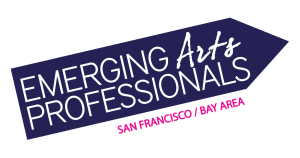Relevance & Reform: a Remixed Response to Randolph Belle
“In a capitalist system, culture is a system of control.” – Todd Lester – Founder, www.freedimensional.org
It’s 3am.
I just got off the phone with a friend of mine – a talented visual artist – who is threatening to become a Republican and abandon her practice. She says that the American public has voted with their dollars and that she cannot continue to make a living in a society that doesn’t see art as relevant. Especially now that she’s a mother.
Our conversation started at 1am.
Throughout it all I had to draw upon the immense spirit of collective action present at the Emerging Program Institute, an intensive offered by the Alliance for Artists Communities for culture workers interested in creating or strengthening residencies for artists. Todd Lester’s quote struck me to my core. Upon hearing about Quan’s plan to cut arts funding, my first response was, “F— Oakland! We can do it on our own, we MUST do it on our own.” The personal is political, right? As a single woman, I would never wait around for a man who had courted me and left me dry to one day wake up and recognize my value. I would go out and seek other options, secure in my self-worth.
It is now all about options.
Lester’s organization, Free Dimensional, works with an international network of individuals who are interested in providing safe space for artists who have been persecuted for their work. They do not accept money from government agencies, depending on foundation and individual support. I am ready for Oakland to do the same. To turn away from the City, turn to our neighbors, engage them as cultural stewards, and say, “Hey, I’m doing this really beautiful/amazing/RELEVANT work. Why don’t you come to a rehearsal, check out my studio? How would you like to support a show?”
I appreciate Randolph Belle’s wisdom and continued enthusiasm after years of working around Oakland arts and culture. I trust his proposal that “reforms to the permitting, planning and zoning processes to expedite housing, venues, and special event projects would generate significant impact.” It is a broader way of approaching recent roadblocks. I want to temper the heat of my disbelief, the sting of budget rejection. I want to believe that Oakland will value its artists. But I know we have to value ourselves first. We have to take inventory – what we have, who we know – and leverage that to a sustainable future. It is time for Plan B, C, and D.
My friend is not going to become a Republican. Of that I’m certain. I can’t say that she’ll continue her practice. I know that she’ll forever be a mother. Faced with the economic realities of raising a child, my passionate words on policy meant very little. So I spoke about relationships.
I spoke about a neighborhood where a child might see an artist doing their art. Where that child, coming home from school one day might ask the artist a question, “What are you doing?” and follow up with a “Why?” I spoke about the subtle shift that occurs when a child, a family, a neighborhood, a COMMUNITY maintains consistent contact with creative thinking. How creative thinking would seep into every day life. To the point that, hopefully, when it’s time to vote again, that art isn’t some thing on a pedestal. Art is your neighbor.
##
 Eboni Senai Hawkins is the Producing Artistic Director of see. think. dance.
Eboni Senai Hawkins is the Producing Artistic Director of see. think. dance.
After valuable experiences in arts administration (Jacob’s Pillow Dance, Yerba Buena Center for the Arts,Alonzo King’s LINES Ballet), she took a leap of faith and started working directly with the art and artists she loved.
Inspired by the opportunity to present intimate performance in a low-pressure environment, Eboni curated a short program for the June 2007 Mission Arts Performance Project (MAPP) hosted by the Red Poppy Art House, featuring dancers Antoine Hunter and Rashad Pridgen.
The response from the primarily visual arts/music audience was overwhelming and in collaboration with Todd Brown and the Red Poppy’s Street-Level Curating Program, Eboni established see. think. dance. to produceTruth + Beauty (November 2007), Word. Warrior. Music. Movement. (March 2008), and Urban Art Sessions(May 2008).
May 2008 also marked the formation of and the first performative installment by The Intimacy Project, an ongoing collaboration between artists/educators who draw creative inspiration from their connection to the African continent and are deeply invested in social change through the re-integration of the mind and the body. Losing a dancer at the last moment and concerned with the flow of the evening’s program, Eboni overcame her fear of the stage to perform a duet with actor Kwesi Hutchful, a movement composition incorporating media installation, tempest tossed by lauren woods and layered with a recorded version of Intro to Kemetic Science by David Boyce.
In 2010, heavily influenced by the REVIVE workshop, Eboni created the annual REflect film series as part of the Black Choreographers’ Festival: Here and Now. Subtitled “The Black Dancing Body on Film”, REflect mines the rich visual history of Black dancers and choreographers on film through a dynamic selection of documentaries, feature films, and shorts.
Don’t miss Reframing the Arts : Advocating for the Public Culture at Oakland Museum of California (OMCA)on Saturday, April 16! Register here.



